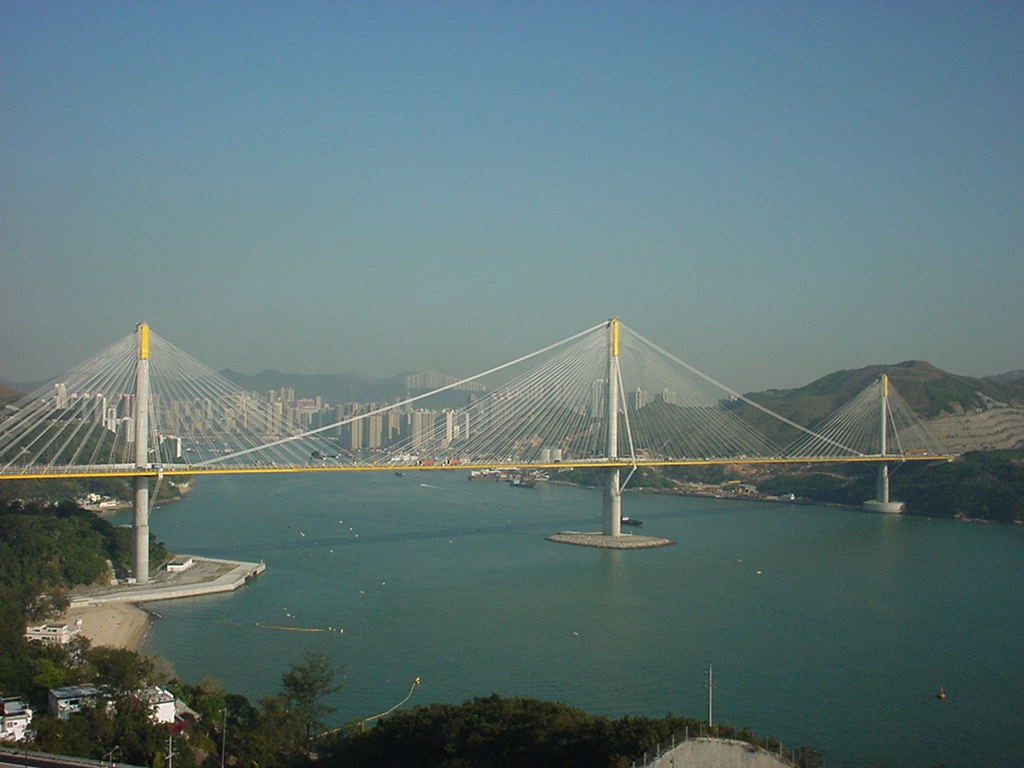
Ting Kau Bridge
The Ting Kau Bridge (TKB) is a three-tower cable-stayed bridge with two main spans of 448m and 475m respectively, and two side spans of 127m each. The bridge deck has been separated into two carriageways with width of 18.8m each. These two carriageways, with a 5.2m gap, are linked at 13.5m intervals by I-shape main crossgirders. Each carriageway grillage consists of two longitudinal steel girders along the deck edges with steel crossgirders at 4.5m intervals, and a precast concrete deck panel on top. The bridge deck is supported in the transverse direction at the three towers, and on the northern end pier and the southern Tsing Yi abutment. In the longitudinal direction, the deck is supported only at the central tower. On both ends of the bridge, the deck is vertically connected by rocker bearings into the northern Ting Kau end pier and the southern Tsing Yi abutment.
The deck is supported by 384 stay cables in four cable planes anchored to the deck edge girders at 13.5 m intervals. The bridge has three slender single-column towers located between the two carriageways. The three towers are 170m, 194m and 158m respectively and composed of concrete structure with steel boxes attached to the top section. Eight longitudinal stabilizing cables, up to 464.6m long, are used to diagonally connect the top of the central tower to the deck adjacent to the side towers. They provide restraint to the central tower from traffic and vertical wind loading. To reduce the vibration of the longitudinal stabilizing cables, damping devices are installed near the lower anchorage between the stabilizing cables and the deck. Because of the slenderness of the single-leg towers, both the central and side towers are also stiffened by a total of 64 transverse stabilizing cables in the lateral direction. They provide restraint to the towers under horizontal wind loading. Figure 1 is a photo of TKB.
